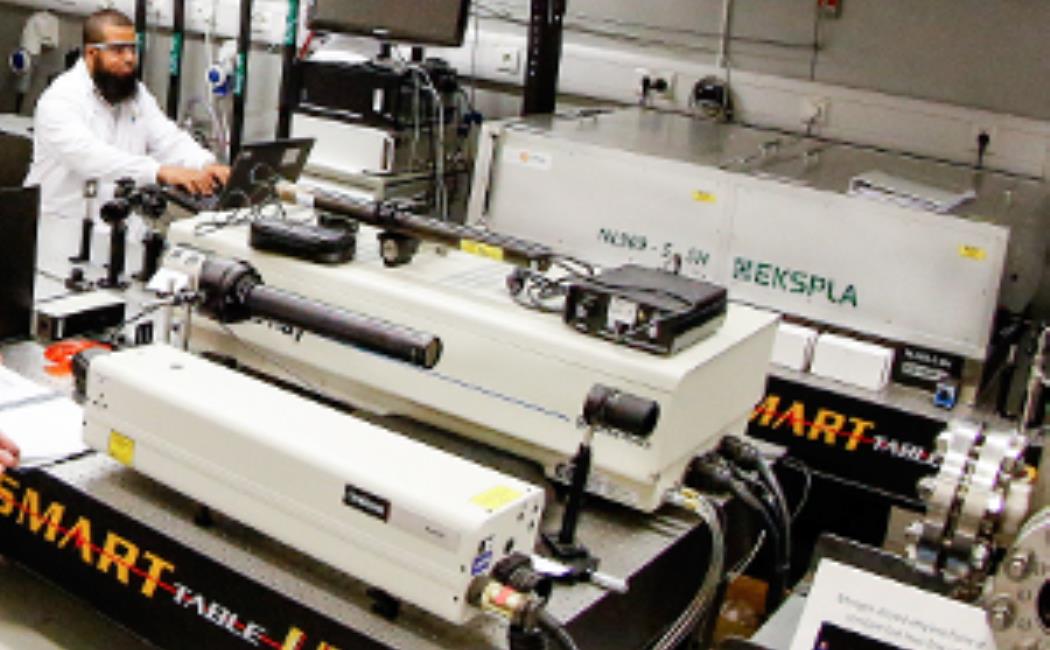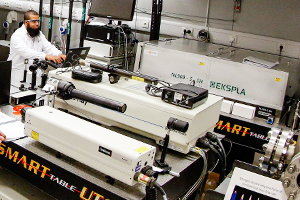


Brand: Continuum
Model: PL9010 DL

A typical PLIF setup consists of a source of light (usually a laser), The light from the laser (usually a beam) is passed through a set of lenses and/or mirrors to form a sheet, which is then used to illuminate the medium. This medium is either made up of fluorescent material or can be seeded with a fluorescent substance. The signal is usually captured by a CCD or CMOS camera and can be related to the various properties of the medium.
PLIF can provide accurate information which is both temporally resolved (usually to nanoseconds) and spatially resolved (routinely under 1 mm). In contrast, other techniques, e.g., emission and absorption spectroscopy and schlieren/shadowgraph techniques are averaged over a line of sight, and other spatially resolved techniques e.g., CARS, Raman scattering, and Rayleigh scattering typically have very low signal levels and have not been used to obtain 2-D spatial information.